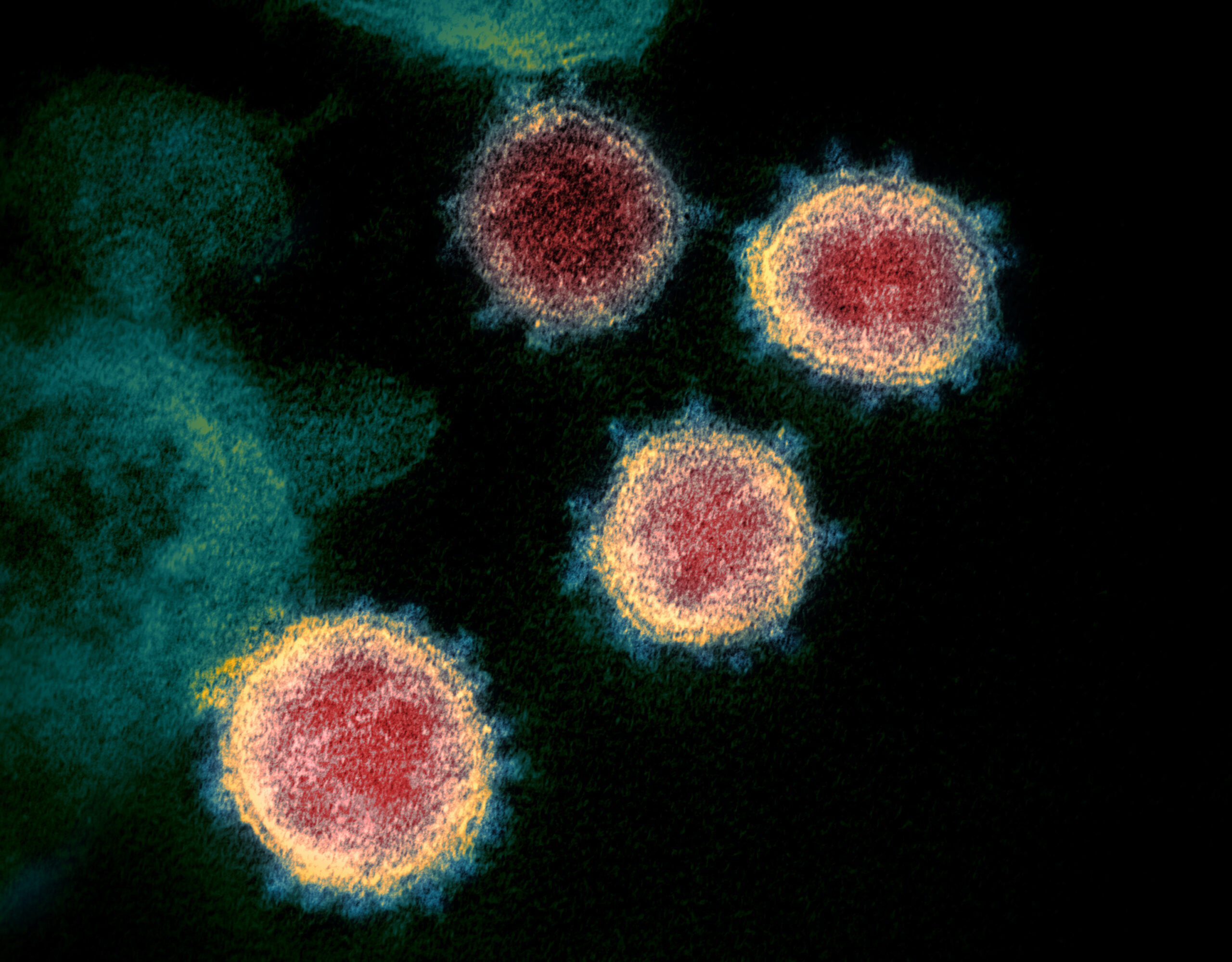The article is devoted to the study of the history of mass diseases and their impact on geopolitics. According to the results of the study, the EU strategy to combat COVID-19 was analyzed. The top 5 changes in world politics that will take place after overcoming the pandemic have been formed. The impact of coronavirus infection on NATO combat capability and the military-political space of the European continent is analyzed – writes Maksym Bielawski, senior expert of the Razumkov Center.
History knows more than any teacher or scientist. She also knows how diseases have changed human history, technological progress, and the political map of the world. Today, this can help politicians avoid fatal mistakes. How have diseases changed history?
The first historical mention of the epidemic dates back to 430 BC. Then virtually the entire population of Athens died. There were several versions of the origin of the sea. One of them testified that merchant ships brought the disease from the Far East, another hypothesis accused the Spartans of poisoning a source of water during the Peloponnesian War.
Naturally, there were also religious opinions that the epidemic was an „Olympus” response to the sinful life of the local population. Despite many hypotheses, the culprit of the epidemic, the winners of the Peloponnesian War appointed the founder of Athenian democracy, Pericles, who was a military leader and before the epidemic skillfully resisted the onslaught of the Spartans. The politician died from the plague epidemic, and with it came the then prosperity of Greece.
Almost a thousand years later, in 536 AD, a new epidemic was recorded, which claimed the lives of almost half of the inhabitants of the Byzantine Empire. Again, there were many causes of the disease, including religious ones, but later scientists proved that the pandemic developed due to mass famine, numerous armed conflicts, and lower average temperatures on Earth due to volcanic activity. As a result, all this led to the final fall of the Western Roman Empire and the birth of a new religion – Islam.
The first mention of the plague in China dates back to 1325 AD. Then the disease was brought by traders through the Silk Road to the Greek settlements of Crimea. The Mongols took advantage of this, during the military assault on the fortress of Kafa (now occupied by the Russians Theodosia), through catapults threw the bodies of their dead and spread the disease among the defenders of the city and its inhabitants. Given the logistical importance of Kafa at the time, the virus quickly spread to old Europe. The epidemic of 1352 AD ended, and the number of victims reached 25 million, which at that time was 5% of the total population of the Earth. This time the pandemic actually caused the fall of the feudal system, because the disease took away a large amount of labor, which served the knights.
The plague has been rampant in Europe for 300 years, fueled by poor sanitation, dirty housing, rat infestation, and trade. The active phase of the struggle began in Venice, wherein 1486 AD the first state executive body was established to take care of the health of the population. He was then called the Magistrate for Health, who had the right to impose harsh measures during the plague outbreak. It adopted rules for the organization of hospitals, restrictions on trade, accommodation of foreigners, issued instructions for doctors, and pharmacists. From the scientific works of Italian pharmacists of the XV century, it is known that the population during the plague was strongly advised to stay at home and avoid mass gatherings. Smoking aromatic herbs purified the air, the room was sprayed with rose water and vinegar. When they went outside, people inhaled fragrant apples, wiped their faces and food with vinegar. To increase immunity, drinking water was consumed with sour lemon and pomegranate juices. The key point in protection against the plague was the isolation of patients in the hospital, as well as disinfection for 40 days of goods, which were believed to be able to adhere to pathogens. According to various estimates, the death rate from a plague in Europe reached 60%. Up to 65% of the population died on the Iberian Peninsula alone. Death took the lives of the great leaders of the time, thus changing the future of kingdoms and states.
History knows the cases of epidemics from America to Europe and their further spread to the Far East. Chronicles record that in 1494 a virus unknown at the time destroyed the French army near Naples. It was later established that it was a venereological disease. There is also a case when the low immunity of the Aztecs and Incas to foreign pathogens accelerated the fall of their empires and the European conquest of the New World in 1521. Then there was an outbreak of diseases such as smallpox or measles.
The plague came to Europe from Asia twice. The next wave of the epidemic occurred in the seventeenth century when the disease was recorded in Seville in 1649 AD. Only after the great fire in London in 1666 AD, when the sources of the epidemic burned out, did the spread of the disease in the Old World gradually decline.
The next case of the mass disease was recorded in 1812 AD during Napoleon’s military campaign. Then the French army suffered from typhus, which strangely struck the enemy of the Russian Empire.
At the beginning of the 19th century, against the background of active industrialization, the number of working-class settlements and slums grew rapidly, where the cholera epidemic spread rapidly. It is unknown what changes the disease could have caused had it not been for technical progress. Then he quickly helped defeat the epidemic by building an extensive drainage infrastructure and the use of antibiotics.
In less than a hundred years, humanity has encountered a new pandemic. The Spanish flu claimed up to 50 million lives in just two years, far more than the number of victims of the First World War.
The disease was first recorded in US military camps in Kansas, where tens of thousands of recruits were trained to land on the European continent. Then the lack of proper hygiene, many exhausted and weakened people, as well as limited space contributed to the spread of the pathogen.
As early as the beginning of March 1918, American military doctors recorded a sharp increase in the number of influenza cases among the personnel. At the same time, it was not possible to reduce the spread of the infection at the initial stage, because thousands of patients were already on their way across the Atlantic. In late March, the first cases of the disease with unusual symptoms were recorded on the west coast of Europe, where they managed to reach tens of thousands of American soldiers. From here, the virus began to spread actively to Paris and further to the south of France, across the English Channel to Great Britain, and, of course, towards the front – to the west of Belgium and the east of France.
The virus also got to Spain. In addition, since the local newspapers enjoyed the freedom of speech and were the first to publish information about the mysterious epidemic, the „Spanish disease” soon became known in Germany. At the same time, German troops during the spring offensive demonstrated success on the Western Front and, in particular, captured many British, French and American soldiers.
Among them were, of course, those infected with the Spanish flu. Thus, the epidemic affected the German army, and soon tens and even hundreds of thousands of soldiers fell ill. Today, a hundred years after the Spanish flu, humanity has encountered a new pandemic. There is no doubt that the disease will be defeated and the story will continue. The main question is – when will this happen, at what cost and what lessons will humanity learn from the geopolitics of the pandemic?
Future scenarios for Europe
Based on a brief historical overview, we will try to analyze possible scenarios for the future of Europe after overcoming the effects of the pandemic.
It should be recalled that Europe was able to unite the postwar crisis of the twentieth century and common economic interests. It was originally the Coal-Steel Association (1951 AD), and six years later the Atomic Energy Association (1957 AD).
What do we have today? Coal reserves on the continent are depleted, consumption is replaced by natural gas and renewable energy sources. At the same time, the EU’s nuclear energy is actively criticized by Russian propaganda, and at the same time, the Kremlin plans to take part in the construction of nuclear power plants in the Czech Republic, Hungary, Bulgaria and Turkey by 2030. In addition to the energy front, European unity has been under attack on the socio-political front for several years in a row.
The first wave – the financial crisis of 2008 confirmed in practice some warnings of Eurosceptics. Ordinary people, small and medium-sized businesses have suffered the most, and multinational corporations have somehow balanced their activities in the euro area.
The second wave – the large-scale migration crisis in 2015 caused a new public protest. The reason for this was the lack of effective personnel policy for the EU countries against the background of the influx of cheap labor from Eastern Europe and the large flow of illegal migrants from the Middle East.
The third wave – began in 2016 and finally ended in early 2020, when the UK withdrew from the European Union. Despite the expectations of Eurosceptics, this event only strengthened the alliance between Germany and France, while reducing US influence on the European continent.
Today, a united Europe, like all of humanity, has faced a new challenge: the coronavirus. All indications are that the pandemic is becoming the fourth wave of an attack on European unity. Here are some examples.
Italy was the first to take the fight against the virus, and the price of this fight is growing exponentially every day. While the European Union was determined with humanitarian aid for the pandemic outpost, its place was taken by China. It is fair to recall that Italy is the first European country to sign an agreement to join the large-scale infrastructure project „New Silk Road”.
This project is to supply Chinese goods to EU markets. The EU’s inertia to help Italians and other members of the club in the future will provoke public opposition to such an association, as ordinary people will once again suffer and transnational corporations will maintain their positions with minimal losses. All this will contribute to the further economic expansion of China, and of course the increasing role of Russia.
The Czech Republic and other EU countries, without waiting for a decision from the European Commission, closed their borders, which made it possible to reduce the spread of the infection, but at the same time restrain European integration processes.
Despite the difficult situation in Ukraine, Antonov Airlines leased the pride of the domestic aircraft industry (AN-124 Ruslan) to deliver the necessary medical goods from China to the Czech Republic. Germany is embroiled in a scandal involving the misappropriation of personal protective equipment purchased by Switzerland and Austria. This is one of the clearest examples of national selfishness, which is a major challenge to European solidarity.
Weak Europe is a rosy dream of authoritarian leaders who know nothing about democratic values and equal rights for ordinary citizens. To maintain European solidarity is to ensure a balance of power on the continent that will guarantee peace for future generations. This should be the main conclusion of the EU countries, which will encourage after the end of the pandemic to begin the fight against selfishness.
COVID-19 against NATO
Modern wars differ from classical confrontations by their hybrid nature, which is aimed at destroying the chains of logistics and suppressing the morale of the people.
The last two tasks can be accomplished with biological weapons and information operations. History will judge how well the current pandemic fits into these individual elements of hybrid warfare theory.
History will judge how well the current pandemic fits into these individual elements of hybrid warfare theory.
The impact of the coronavirus can affect the European Union’s defense system by cutting budgets in times of crisis, changing the approaches of governments, focusing on domestic issues, growing national selfishness, and misinformation spread by Russia and China.
The information strategy of the latter aims to lull the vigilance of European countries and, without stopping the growth of their own military capabilities, to announce a large-scale peaceful action to help the countries most affected by the coronavirus and the economic recession.
Besides, amid the downturn in the US economy, new high-level political debates are likely to arise over the revision of NATO funding in Europe. The above factors are the conditions for an ideal storm, which can be curbed, in particular by revising the strategic plans of the North Atlantic Alliance in terms of simplifying logistics chains, the smooth operation of command systems and medical forces.
European politicians must also understand the importance of working out a common approach to countering potential threats on the Eastern Front and increasing the mobility of NATO forces. The war in eastern Ukraine should be a clear reminder that the enemy is not asleep.
The world after the crisis
Concluding the previous sections, I would like to express my view on the global changes that may take place shortly.
Top five possible changes:
- Moving the center of the world economy from the United States to China. Winners and leaders write history. This statement will be decisive, because, in the fight against the pandemic, the United States, Britain, and the EU are currently showing insufficient leadership and cohesion, which cannot be said about the countries of the Asia-Pacific region.
- The gradual lifting of sanctions on Russia, it’s tightening of an international policy against the background of falling world prices for natural gas and oil. By sending doctors and medical equipment to fight coronavirus in Italy, the Kremlin has reduced the likelihood that Rome will vote to continue anti-Russian restrictive measures. Strengthening China’s geopolitical position will also help increase Russia’s aggression.
- Reset economic strategies: localized and maneuverable production, as well as the maximum simplification of complex logistics chains for the supply of resources and sales of goods. The development of robotics, bioengineering, and IT technologies will definitely contribute to this. Developed countries will increase the strategic reserves of essential raw materials; gradually increase their own production against the background of simplification of technological cycles, as well as in anticipation of new global challenges.
- Temporarily shifting the focus of the international community from medium-term challenges (such as global warming) to overcome the effects of the economic crisis.
- Reformatting of interstate unions and associations. An increase in the number of states on the verge of default. Narrowing the rights and freedoms of citizens. Increasing the number of authoritarian leaders against the background of the final approval of power, which was granted temporarily for the period of overcoming the effects of the pandemic and economic recession.









